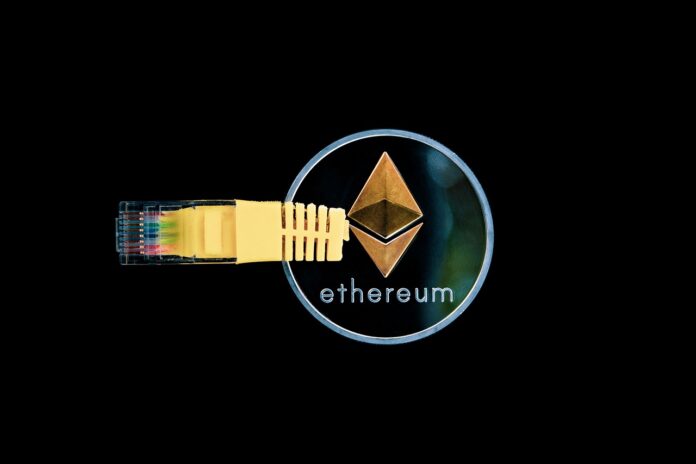Introduction
Ethereum, launched in 2015 by Vitalik Buterin and a team of developers, has established itself as the leading blockchain platform for decentralized applications (dApps) and smart contracts. Unlike Bitcoin, which is primarily seen as a digital currency, Ethereum’s value is intrinsically tied to its utility as a platform for building decentralized solutions. The price of Ethereum (ETH) reflects not only the speculation common in the cryptocurrency market but also the underlying adoption and use of its technology. This article delves into the factors influencing Ethereum’s price, recent trends, and what the future might hold.
Historical Price Overview
1. Early Years (2015-2017)
Ethereum’s initial launch saw it trading at less than $1. The project quickly gained traction due to its unique proposition of enabling programmable smart contracts on its blockchain. By the end of 2016, Ethereum’s price had risen to around $10, driven by growing interest and the success of early dApps and Initial Coin Offerings (ICOs) conducted on its platform.
The year 2017 marked a significant surge for Ethereum. The price soared to over $400 in June and reached an all-time high of nearly $1,400 in January 2018. This increase was largely driven by the ICO boom, where numerous projects were raising funds by issuing their own tokens on the Ethereum platform.
2. Market Correction and Stabilization (2018-2020)
Following the peak in early 2018, Ethereum, like many cryptocurrencies, experienced a significant correction. By the end of 2018, Ethereum’s price had dropped to around $80. The market entered a phase of consolidation, with prices fluctuating as the hype of the ICO boom subsided and the focus shifted to the long-term viability of blockchain technology.
Throughout 2019 and 2020, Ethereum’s price began to recover, supported by developments such as Ethereum 2.0 and the rise of decentralized finance (DeFi). By December 2020, Ethereum had surpassed its previous highs, trading around $700 to $800, reflecting renewed interest and growing adoption.
3. Recent Trends (2021-Present)
The year 2021 was a landmark year for Ethereum. The price surged to an all-time high of over $4,000 in May 2021, driven by several factors, including the expansion of DeFi projects, the growing popularity of non-fungible tokens (NFTs), and the ongoing transition to Ethereum 2.0.
The transition to Ethereum 2.0, a major network upgrade aimed at improving scalability and reducing energy consumption, has been a significant driver of ETH’s price. The shift from a Proof of Work (PoW) to a Proof of Stake (PoS) consensus mechanism is expected to enhance the network’s efficiency and attract more developers and projects.
Despite experiencing some volatility, Ethereum remains a critical player in the blockchain space. As of mid-2024, ETH’s price continues to be influenced by various market and technological developments.
Factors Influencing Ethereum’s Price
1. Technological Developments
Ethereum’s price is heavily influenced by its technological advancements. The ongoing upgrades to Ethereum 2.0, which include the transition to a PoS consensus mechanism and the implementation of sharding, are crucial. These upgrades aim to increase transaction throughput, reduce gas fees, and make the network more scalable and secure.
2. Adoption and Use Cases
The growing adoption of Ethereum’s platform for DeFi applications and NFTs significantly impacts its price. DeFi platforms, which offer decentralized financial services such as lending and trading, have seen explosive growth, contributing to higher demand for ETH. Similarly, the popularity of NFTs, digital assets that are unique and verified using blockchain technology, has driven additional interest in Ethereum.
3. Market Sentiment and Speculation
Like other cryptocurrencies, Ethereum’s price is subject to market sentiment and speculative trading. Positive news, such as partnerships, institutional investment, or successful network upgrades, can drive prices up. Conversely, negative news or broader market corrections can lead to significant price declines.
4. Regulatory Environment
Regulatory developments and legal frameworks surrounding cryptocurrencies can impact Ethereum’s price. Clearer regulations and acceptance by governments can enhance investor confidence and drive price increases. However, regulatory crackdowns or unfavorable legislation can have the opposite effect.
5. Competition and Innovation
The emergence of competing blockchain platforms and advancements in technology can influence Ethereum’s market position and price. Platforms like Binance Smart Chain, Solana, and Cardano offer alternative solutions that can attract developers and users, potentially impacting Ethereum’s market share and price.
Future Prospects
1. Ethereum 2.0 and Scalability
The successful implementation of Ethereum 2.0 is anticipated to have a significant impact on the price. By improving scalability and reducing transaction costs, Ethereum 2.0 could enhance the platform’s attractiveness to developers and users, potentially driving up demand and price.
2. Expansion of DeFi and NFTs
The continued growth of DeFi and NFTs is likely to support Ethereum’s price. As more projects are built on Ethereum and new use cases emerge, demand for ETH could increase, contributing to price growth.
3. Institutional Investment
The involvement of institutional investors in the cryptocurrency space could have a positive impact on Ethereum’s price. Institutional investment can bring greater legitimacy and stability to the market, driving demand for ETH.
4. Regulatory Developments
The future of Ethereum’s price will also be influenced by the regulatory environment. Positive regulatory developments could support price growth, while stringent regulations or bans could introduce volatility.
Conclusion
Ethereum’s price dynamics reflect a complex interplay of technological innovation, market sentiment, adoption trends, and regulatory factors. From its early days as a pioneering blockchain platform to its current status as a key player in the cryptocurrency space, Ethereum continues to attract interest and investment. While its price remains volatile and influenced by various factors, the ongoing developments in Ethereum 2.0 and the expansion of DeFi and NFTs suggest a promising future.


